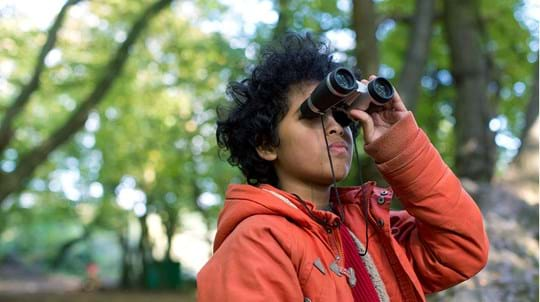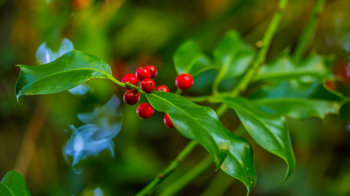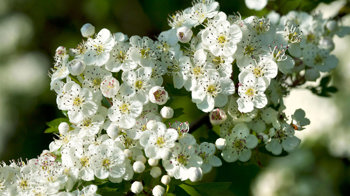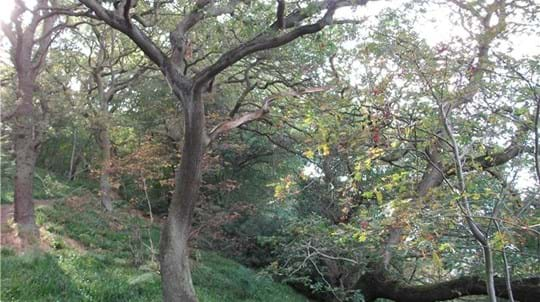
Whittle Dene
Ovingham

Woodland Trust wood
19.58 ha (48.38 acres)
NZ072650
Explorer 316
OS Landranger 88
Legend has it that this ancient woodland is a dwelling place for fairies and wandering spirits. Whittle Dene certainly has a wild and enchanted feel, characterised by towering trees with exposed roots, gnarled tree stumps, rocky outcrops and glorious wildflower displays.
The site sweeps across a deep river valley, along the banks of the Whittle Burn which flows south to join the River Tyne. From playful otters to colourful birds, wildlife abounds here.
Wander along a network of footpaths and bridleways to discover the remains of a water-driven mill, a testament to the site’s rich industrial heritage.
Features
- Public access
- Spring flowers
- Broadleaved woodland
How to get to Whittle Dene
Whittle Dene lies approximately eight miles west of Newcastle, between Prudhoe and the A69, in the county of Northumberland.
There is no parking on site. If arriving by car, you may find parking spaces in the nearby villages of Ovingham and Ovington, both located 1.2km (0.75 miles) from the wood.
If walking from Ovingham, pick up the public footpath behind the church leading across the fields into the wood.
Prudhoe is the nearest train station, located 1.6km (1 mile) from Whittle Dene.
Visit National Rail for more information.
The nearest bus stops to the wood are at Prudhoe railway station and Ovington. Buses come from Newcastle and Hexham into this area.
Visit Traveline for more information.
Facilities and access
Various surfaced and grassy paths wind through the woods, many of which link to wider walks in the surrounding countryside. Most routes have steps, with uneven ground due to rocks and tree roots. Some paths are narrow and steep, while other areas can become boggy in winter.
There are six main entrances to Whittle Dene. The entrance to the north of the wood, off the A69, features a kissing gate. Other entrances include steps and a narrow footbridge.
There is no parking on site. Local parking may be available in the nearby villages of Ovingham and Ovington, both located 1.2km (0.75 miles) from the wood. Four miles south of Whittle Dene, the Tyne Riverside Country Park has a pay and display car park.
No toilet facilities are available on site. There are toilet facilities at the Tyne Riverside Country Park. Public toilets can also be found in Prudhoe on Tyne View Terrace, close to the police station. Two RADAR toilets are also available in Prudhoe, one on Neale Street and the other on South Road.
Wildlife and habitats
Animals
The banks of the burn are home to newts and otters, while an abundance of birdlife can be spotted overhead. In spring, listen for the melancholy song of the willow warbler and look out for the daring displays of male buzzards as they try to attract a mate by soaring and swooping through the sky like a rollercoaster.
Come nightfall, you might hear the soft hooting of the wood’s resident owls and spot bats flitting through the trees. At dusk and dawn, roe deer acrobatically bound through the trees. Deadwood found dotted across the woodland provides homes for wood-boring beetles.
Trees, plants and fungi
The ancient woodland of Whittle Dene is made up of a vibrant mix of trees of varying ages, from young woody shrubs to mature trees over 70 years old. On a woodland stroll you’ll mostly spot oak, ash and elm trees, interspersed with stands of alder, hazel, rowan, as well as towering conifers.
The tangled understory of hawthorn, rowan and holly is dotted with fallen trees and gnarled stumps, where fungi flourishes in the autumn. In spring, dazzling displays of ground flora range from swathes of bluebells, wild garlic and dog’s mercury to rarer blooms such as early purple orchids and guelder rose.
Elsewhere you may find wood anemone, pignut, marsh marigold and primrose, while the mill pond has been colonised with willow, alder and opposite-leaved golden saxifrage.
Habitats
The lush woods of Whittle Dene are classed as ancient semi-natural woodland, having been continuously wooded since at least 1600. Clues to the woodland’s ancient status can be found across the forest floor, where ancient indicator species such as bluebell, dog’s mercury and early purple orchid flourish. Coppiced wood provides shelter for birds and butterflies, and there is also an abundance of dead wood which recycles essential nutrients back into the soil.
History of Whittle Dene
Whittle Dene is steeped in folklore and is said to be home to fairies; it’s easy to imagine these magical inhabitants among the old tree hollows, toadstools and vibrant bluebells of the ancient woodland. The woods are also said to be haunted by the evil spirit of Long Lonkin, a notorious criminal from the 1200s.
In addition, the site has a fascinating industrial history. At the southern end of the woodland lie the ruined remains of a water-driven mill, which was used to mill corn and bleach cotton until its demise in the 1800s. The mill pond has become overgrown with willow, alder, Dutch rush and opposite-leaved golden saxifrage.
A number of woodland cabins in the local area were built as rural retreats for townsfolk, and housed evacuees during the Second World War.
Things to do in Whittle Dene
Walking
The woodland has a variety of footpaths and bridleways to explore which link in with the wider landscape, with routes leading to nearby villages. Whittle Dene is also only 2km (1.2 miles) from the World Heritage Site of Hadrian's Wall.
You could opt for a 6km (3.7 mile) circular walk from Ovington to Whittle Dene, which takes you through the dene and past Whitte Farm before looping back to the village.

Visiting woods
Walking dogs in our woods
Dogs are welcome for walkies in our woods. Take a look at our tips and guidelines for ensuring we keep our woods safe and special for dogs and wildlife.

Visiting woods
Events
Discover events at our woods and the festivals and fairs you can find us at soon.

Visiting woods
Things to do in the woods
Go on an adventure. Get closer to nature. Uncover history. Discover ways to explore the UK's woods whatever the season.


























